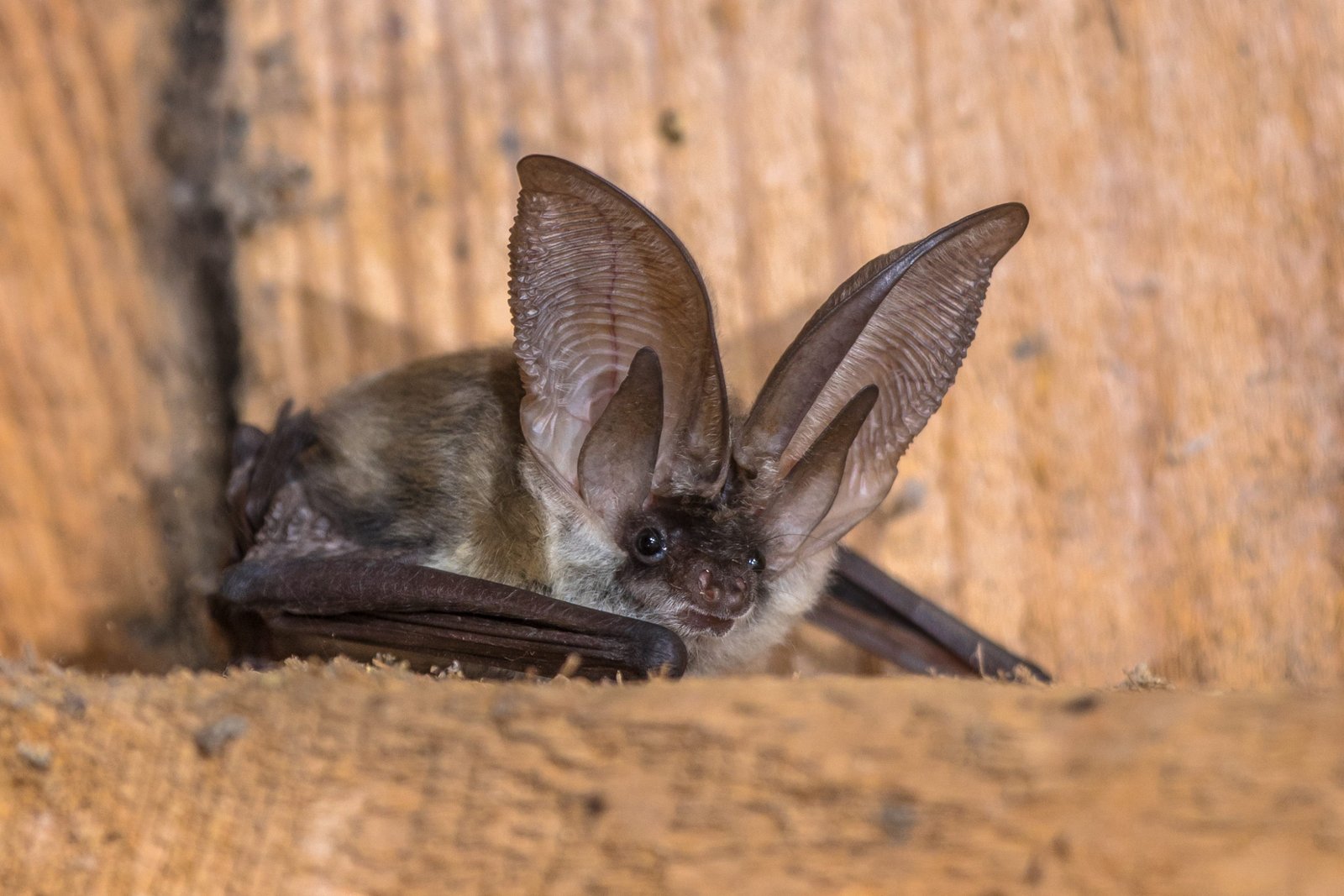Townsend’s Big-Eared Bat: Corynorhinus Townsendii

From British Columbia south to Oaxaca, Mexico, throughout western North America, Townsend’s big-eared bats are found with two endangered subspecies in remote areas in the United States’ Ozark and Central Appalachian regions.
Their most typical habitat is the arid western desert scrub and regions of pine forest. Using their echolocation to hunt moths and other insects, these agile fliers venture out to forage only after dark. Females form maternity colonies in buildings, mines, and caves in the spring and summer, while males roost individually.
Learn More: Bat Species In North America
Physical Characteristics Of Townsend’s Big-Eared Bat
The Townsend Big-eared bat is a medium-sized bat with overtly large ears and distinctive bilateral horseshoe-shaped lumps on the muzzle. The lumps are enlarged perirhinal glands producing sebaceous secretions, giving the bat one of its common names, the lump-nosed bat.
The dorsal hairs are gray at the base, and the color of the hair’s tip color varies between pale cinnamon and blackish brown. The ventral hairs are gray and are brown at the tips.
Ear length and tragus (inner side ear prominence) are 30 to 39 mm and 11 to 17 mm. The ears are erect and, in flight, point slightly forward. However, one or both ears may be coiled tightly along the head during torpor and hibernation, leaving only the long spotted tragus visibly erect.
The bat’s forearm ranges from 1.5 to 1.9 inches in length. The average Townsend’s Big-eared bat’s total length is 3.5 to 4.4 inches, and the adult mass varies from 5 to 13 g. 1Go To Source fs.usda.gov -“Townsend’s Big-eared Bat (Corynorhinus townsendii)”
Townsend’s Big-Eared Bat Behavior

Unlike other bats, which prefer to roost in cracks, crevices, and other secluded places, Townsend’s big-eared bat move in darkness and prefer to roost in open spaces.
When it detects human interference, it will abandon its nest and other roosting areas. Interfering with this species’ habitat will force the animals to relocate to a new roost.
This bat species hibernate in large groups in caves, mining tunnels, and abandoned buildings during the winter months.
Reproduction Of Townsend’s Big-Eared Bat
The number of Townsend’s Big-Eared Bat pups in summer maternity colonies varies from a few dozen to hundreds. Bat colonies are established between March-June and pups are born between, with pups born between May and July.
For pup rearing, maternity colonies prefer sites that have warm and stable temperatures. During the maternity season, males remain solitary, and around 90% of all females produce young in the maternity colonies.
Only one baby bat is born per mother, and at around 3 weeks old, the pups will start flying.
Townsend’s Big-Eared Bat Diet & Foraging Habits
Moths usually comprise more than 90% of Townsend’s Big-eared bat diet. Smaller amounts of other prey are also eaten, such as beetles, flies, and lacewings. During the fall and winter, this bat species forages for moths before hibernation.
The activity of foraging stretches from after sunset to before sunrise. Although more extended nightly foraging patterns have been recorded, travel distances of 1-18 km between day roosts and foraging sites are typical.
The Townsend big-eared bat is characterized by a slow and highly maneuverable flight, feeding primarily on flying insects caught near and between leaves. This species is a creature of habit and will return to the same foraging locations. 2Go To Source wdfw.wa.gov -“Townsend’s big-eared bat’
Habitat Of Townsend’s Big-Eared Bat
The Townsend’s Big-eared Bat is commonly found in caves, mines, and other similar features found in badlands and river breaks, such as talus caves and erosion cavities. For maternity roosts and hibernacula, caves and abandoned mines are used by this bat species.
Big-eared bats prefer habitats ranging from -1 to 8 degrees Fahrenheit when searching for a hibernation site. Maternity roost sites tend to be cold for these bat ranging from 12 to 18 degrees Fahrenheit. Common maternity sites include caves and mines.
Researchers have observed the bat’s use of buildings in late summer for mating purposes. 3Go To Source fieldguide.mt.gov -“Townsend’s Big-eared Bat – Corynorhinus townsendii”
Townsend’s Big-Eared Bat Conservation
This species has traditionally declined due to humans’ overt killing and the loss or disruption of roost sites. These animals are sensitive to light and movement, so they wake up, and their ears start to twitch as they attempt to locate the intruder if they are disturbed during the day. The whole group takes off if the disruption happens for more than a few seconds, and the roost may be abandoned.
In the late 1980s, a report created by the California Department of Fish and Game recorded population loss in the past 30 years of 40-60%. By 1991, only about half of the pre-1980 maternity colonies known to exist in California remained involved, resulting in an estimated 54% decline in adult women. Only three maternity colonies increased in number during the time, and all three are located in the National Park areas (Point Reyes National Park, Lava Beds National Monument, and Pinnacles National Monument).
Consequently, for this species to survive, it is essential to reduce human interference and conserve the environment.
Townsend’s big-eared bat population on the west coast of North America may have been protected by human activity since human-made structures provide a refuge for big-eared bats. 4Go To Source nps.gov -“Townsend’s Big-eared Bat”
Sources:
- Gruver, Jeffery, and Douglas Keinath. “Townsend’s Big-Eared Bat (Corynorhinus Townsendii): A Technical Conservation Assessment.” U.S. Forest Service, USDA, 25 Oct. 2006, www.fs.usda.gov/Internet/FSE_DOCUMENTS/stelprdb5181908.pdf.
- “Townsend’s Big-Eared Bat | Washington Department of Fish & Wildlife.” Washington Department Of Fish And Wildlife, WDFW, wdfw.wa.gov/species-habitats/species/corynorhinus-townsendii#desc-range. Accessed 30 Dec. 2020.
- Townsend’s Big-eared Bat — Corynorhinus townsendii. Montana Field Guide. Montana Natural Heritage Program and Montana Fish, Wildlife and Parks. Retrieved on December 30, 2020, from http://FieldGuide.mt.gov/speciesDetail.aspx?elcode=AMACC08010
- “Townsend’s Big-Eared Bat – Channel Islands National Park (U.S. National Park Service).” National Park Service, NPS, www.nps.gov/chis/learn/nature/townsends-bats.htm. Accessed 30 Dec. 2020.
